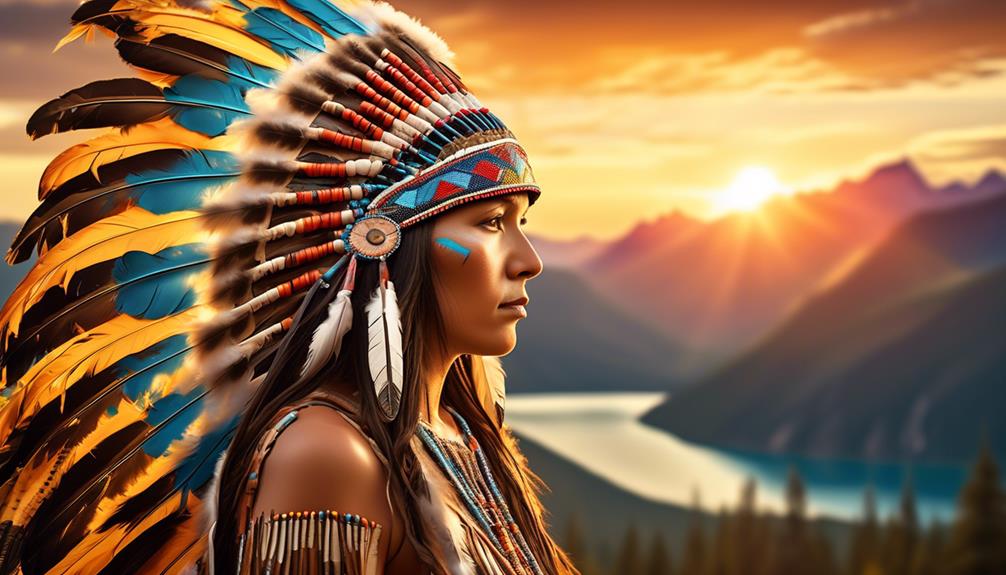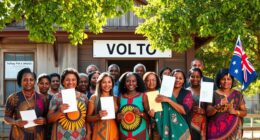We are delving into the ancestral heritage of the Tagalog people, uncovering their strong connections to indigenous traditions and origins. The rich cultural heritage of the Tagalog community is intertwined with ancient indigenous practices, offering us valuable insights into their history and identity. This investigation underscores the contrast between modern influences and long-standing traditions, providing a comprehensive look at how Tagalog culture has evolved over time. By immersing ourselves in the traditional Tagalog way of life, we gain a deeper understanding and respect for the unique customs and beliefs that have shaped their collective identity.
Prehistory and Origins of Tagalog Ethnicity
Early Inhabitants
The Tagalog people have a rich history that dates back to prehistoric times. They are one of the indigenous ethnic groups in the Philippines, having inhabited the region for thousands of years. As we explore their origins, we gain insight into their deep connection with the land. The Tagalog people’s presence in the Philippines predates recorded history, making them an integral part of the country’s precolonial heritage.

As early inhabitants of the Philippine archipelago, our ancestors laid down roots in what is now known as Luzon—the largest island in the Philippines. This ancient lineage has shaped not only our cultural traditions but also our understanding of community and belonging. By delving into this rich past, we can appreciate how deeply ingrained our ties to this land truly are.
Tracing Ancestral Roots
Exploring Tagalog ethnicity leads us on a journey through time—a journey that unveils stories of resilience, adaptation, and survival across generations. Our ancestors navigated through various periods in history—embracing change while preserving essential aspects of their identity and culture. Understanding these historical narratives allows us to recognize how our present-day experiences are intertwined with centuries-old legacies.
The evolution of Tagalog ethnicity reflects a tapestry woven from diverse influences—spanning from indigenous practices to external interactions with neighboring cultures throughout Southeast Asia. This intricate blend forms an integral part of who we are today—a testament to our ability to embrace diversity while upholding ancestral customs.
Traditional Societal Structures of the Tagalog Community
Kinship and Hierarchy
The traditional societal structures of the Tagalog community were deeply rooted in kinship and hierarchy. This means that family ties and social ranking played a crucial role in shaping the dynamics within the community. For example, respect for elders and deference to authority figures were highly emphasized, reflecting the hierarchical nature of their society.
In Tagalog communities, one’s place within the social structure was often determined by familial connections and lineage. This meant that individuals had specific roles and responsibilities based on their position within their families. The emphasis on kinship fostered a strong sense of unity among relatives while also reinforcing traditional values such as loyalty, duty, and respect for one’s elders.
Bayanihan Spirit
The bayanihan spirit, or communal unity, was another cornerstone of traditional Tagalog society. This concept revolved around the idea of collective effort for the benefit of all members of the community. In practice, this meant that when someone needed help with tasks like moving house or building a home, neighbors would come together to lend a hand without expecting anything in return.
This communal mindset not only strengthened social bonds but also ensured that everyone’s needs were met through mutual support. It exemplified how cooperation and solidarity were integral components of everyday life in Tagalog communities.

The Datu System
The Datu system served as an essential aspect of governance in traditional Tagalog communities. Under this system, leaders known as Datus held significant influence over their respective territories. They presided over matters related to justice, order, land distribution, and inter-community relations.
Moreover, Datus played a pivotal role in mediating disputes among community members while upholding customary laws unique to each region under their jurisdiction. Their leadership carried great weight due to its direct impact on maintaining peace and stability within these societies.
Evolution of Tagalog Culture During Spanish Colonialism
Religious Influence
The introduction of Christianity during the colonial era had a profound impact on Tagalog culture. We can see how the indigenous religious beliefs of the Tagalog people were influenced by the arrival of Spanish missionaries. Churches and religious institutions became central to community life, shaping not only spiritual practices but also social structures. Despite this influence, elements of indigenous spirituality persisted, blending with new religious practices brought by the colonizers.
The integration of Christian traditions into Tagalog culture is evident in various aspects such as festivals, rituals, and even language. For example, traditional Filipino celebrations like “Flores de Mayo” have roots in both indigenous customs and Catholic observances. This fusion reflects how colonization led to a unique blend of cultural expressions that continue to thrive within contemporary Filipino society.
Societal Transformations
Spanish influence also extended beyond religion and permeated societal norms and structures among the Tagalog people. The expansion of Spanish authority introduced new political systems that coexisted with existing indigenous governance structures. As a result, we witnessed a complex interplay between traditional leadership roles and those appointed or recognized by colonial powers.
Moreover, changes in land ownership patterns occurred under Spanish rule which significantly altered agricultural practices among the Tagalog community. While many aspects were impacted by colonization, it’s important to note that certain facets remained resilient despite external pressures.

Religious Practices and Indigenous Faith Among Tagalog People
Pre-Colonial Beliefs
Before the Spanish colonization, Tagalog people embraced their indigenous faiths, including animism and ancestor worship. They revered nature and believed that spirits resided in natural elements like trees, rivers, and mountains. Ancestral veneration was also a significant aspect of their spiritual practices. The Tagalogs honored their ancestors through rituals and offerings to seek guidance and protection.
The arrival of Christianity brought about a significant shift in the religious landscape of the Tagalog community. The adoption of Catholicism led to the integration of Christian beliefs with indigenous practices among many Tagalogs. Instead of completely abandoning their traditional faiths, they incorporated certain aspects into their new religious framework.
Contemporary Religious Landscape
Today, some Tagalogs still maintain elements of their indigenous faith alongside practicing Catholicism. Despite centuries of influence from Christianity, there are those who continue to hold on to traditions rooted in animism and ancestor worship. This unique blend reflects the resilience and adaptability of the Tagalog people’s cultural identity.
Pros:
Preservation of ancestral traditions.
Cultural diversity within religious practices.
Integration fosters a sense of continuity with ancestral heritage.
Cons:
Potential conflicts between traditional beliefs and organized religion.
Challenges in reconciling divergent spiritual perspectives within families or communities.
Language and Literary Contributions of the Tagalog People
Tagalog Language
The Tagalog language is one of the major languages spoken in the Philippines. It has a rich history and plays a significant role in Philippine culture. The language has evolved over many years and has been influenced by various cultures, making it unique and diverse.
The preservation and promotion of the Tagalog language are essential for maintaining cultural identity. By safeguarding our native tongue, we honor our heritage and ensure that future generations can connect with their roots. This also allows us to preserve traditional knowledge, stories, and practices that are passed down through generations.
Literary Figures
Prominent literary figures from the Tagalog community have made substantial contributions to Philippine literature. Their works encompass various genres such as poetry, novels, essays, and short stories. These writings often reflect the rich cultural heritage of the Tagalog people while addressing universal themes that resonate with readers across different backgrounds.
Authors like Jose Rizal have left an indelible mark on Philippine literature through their compelling narratives that shed light on historical events and societal issues. Their enduring works continue to inspire writers and readers alike, serving as a testament to the enduring legacy of Tagalog literary contributions.
Importance of Preservation
Preserving indigenous languages like Tagalog is crucial for maintaining diversity within a society. Our unique words, terms, names hold deep significance within our culture; they encapsulate our values, traditions, beliefs which may not be fully translatable into other languages.
Traditional Arts, Crafts, and Cuisine of the Tagalog Community
Rich Tradition
The Tagalog community boasts a rich tradition of arts and crafts, encompassing various forms such as weaving, pottery, and woodcarving. The intricate designs in their woven textiles showcase the skillful handiwork passed down through generations. Similarly, their pottery reflects a blend of functionality and artistic expression.
Exploring the traditional arts and crafts of the Tagalog people is like embarking on a journey back in time. We can witness how their cultural heritage is intricately woven into every piece they create. From the rhythmic patterns in their weavings to the elaborate carvings on wooden items, each craft tells a story that connects us to their indigenous roots.
Unique Cuisine
Delving into traditional Tagalog cuisine offers an exciting exploration of unique flavors and ingredients deeply rooted in indigenous traditions. Dishes often feature staple crops such as rice alongside locally-sourced ingredients like bamboo shoots or coconut milk. These elements come together to create dishes that are not only flavorful but also reflect the bountiful resources found within their ancestral lands.
Our culinary adventure allows us to savor dishes that have been perfected over centuries, showcasing the creativity and resourcefulness inherent in Tagalog cooking. Whether it’s indulging in savory stews or enjoying sweet delicacies made from rice flour and coconut milk, each bite provides a glimpse into the heart of Tagalog culture.
Tagalog People’s Role in Philippine History and Society
Historical Significance
The Tagalog people have played a pivotal role in shaping Philippine history and society. Prominent Filipino national heroes, such as Jose Rizal, were of Tagalog descent. Their contributions to the fight for independence against Spanish colonization are well-documented. For example, the “Noli Me Tangere” and “El Filibusterismo,” novels written by Rizal, sparked a sense of nationalism among Filipinos.
The capital city of the Philippines, Manila, is located within the ancestral lands of the Tagalog people. This geographical positioning has significantly influenced the cultural and political landscape of the nation. With this historical context in mind, it becomes evident that understanding Tagalog culture is essential to comprehending Philippine history as a whole.
Cultural Influence
The influence of Tagalog society extends beyond historical events into various aspects of Filipino life. From language to customs and traditions, their impact is deeply ingrained throughout the country. The widespread use of Tagalog words, even outside their native regions, demonstrates how deeply rooted their linguistic influence is.
For instance, many everyday Filipino words are derived from or heavily influenced by Tagalog vocabulary. Even non-Tagalog speakers often incorporate these terms into their daily conversations without realizing their origin. This phenomenon highlights how pervasive and influential Tagalogs’ culture has been across different ethnic groups within the Philippines.
Contemporary Status of Tagalog Language and Culture
Widely Spoken
The Tagalog language is still widely spoken in the Philippines today. Many of us, especially those living in urban areas, use Tagalog as our primary means of communication. It’s not just a regional dialect; it’s the country’s national lingua franca.
Efforts to preserve and promote Tagalog culture are evident through various educational initiatives and cultural programs. For example, schools across the Philippines include Tagalog classes in their curriculum to ensure that younger generations grasp the language and its cultural significance. Media outlets often feature programs that showcase traditional Tagalog practices, further promoting awareness and understanding.
Thriving Traditions
Despite modern influences seeping into our daily lives, numerous aspects of traditional Tagalog culture continue to thrive. From indigenous music and dances to customary clothing styles, we see these traditions being celebrated during local festivals and events throughout the country.
In terms of language preservation, there have been discussions about adopting a new orthography for written Filipino (which includes elements from Tagalog). This move aims to streamline writing rules while maintaining linguistic integrity. The inclusion of the glottal stop—a distinct feature of many Philippine languages—further emphasizes efforts to maintain authenticity within our linguistic expressions.
Conclusion on the Indigeneity of the Tagalog People
After delving into the rich tapestry of Tagalog history and culture, we’ve gained a profound appreciation for the indigenous roots of the Tagalog people. It’s clear that their precolonial traditions, societal structures, and artistic expressions reflect a deep connection to their land and heritage. As we celebrate their resilience and contributions to Philippine history, let’s continue to honor and support the preservation of Tagalog language, arts, and customs. Together, we can amplify their voices and ensure that future generations embrace and cherish the indigeneity of the Tagalog people.
Let’s join hands in advocating for the recognition and protection of indigenous cultures worldwide. Our journey through the story of the Tagalog people serves as a reminder of the importance of preserving diverse cultural identities. Embracing and respecting these heritages enriches us all, fostering a world where every culture is valued and celebrated.
Frequently Asked Questions
Are the Tagalog people considered indigenous?
Yes, the Tagalog people are recognized as indigenous to the Philippines, with a rich history and cultural heritage that predates colonial influences.
What is the traditional societal structure of the Tagalog community?
The traditional societal structure of the Tagalog community was characterized by a hierarchical system led by respected elders and leaders who governed various aspects of communal life.
How did Spanish colonialism impact the evolution of Tagalog culture?
Spanish colonialism significantly influenced the evolution of Tagalog culture through religious conversion, language assimilation, and changes in societal structures.
What role do the Tagalog people play in Philippine history and society?
The Tagalog people have played a significant role in shaping Philippine history and society through their contributions to language, arts, cuisine, governance, and resistance against colonization.
Is there evidence supporting the indigeneity of the Tagalog people?
Numerous historical records, linguistic studies, archaeological findings, and oral traditions provide compelling evidence supporting the indigeneity of the Tagalog people.









